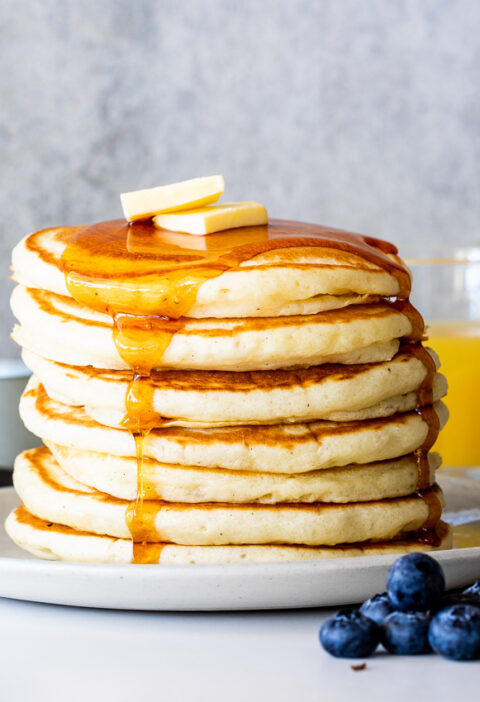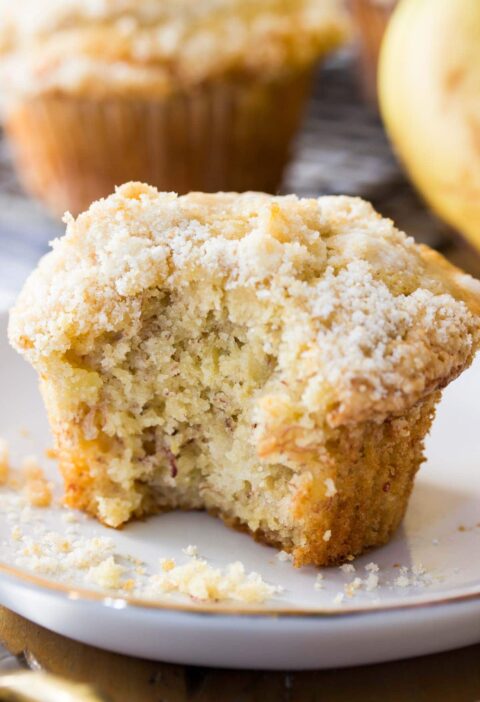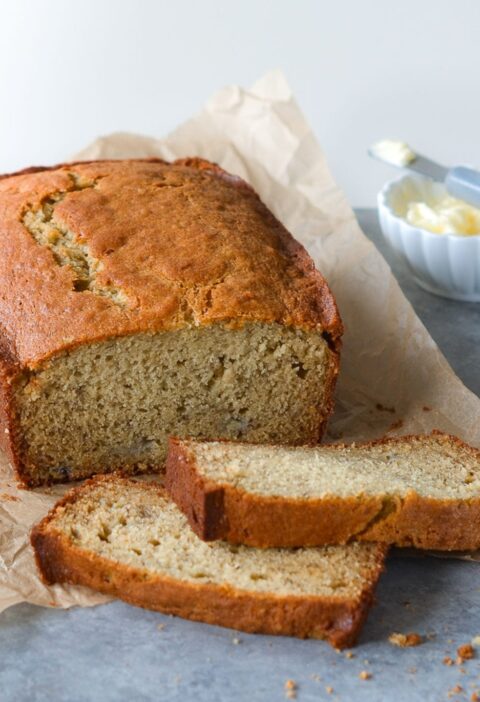Blue Berry Buckle is a fairly dense cake, it’s name actually comes from the center buckling once it’s cooled down. The topping is a streusel like that often found on coffee cakes. The texture tends to be quite dry and crumbly. All of the different ingredients play a role in making the dessert turn out this way. From the flour to the milk, and even to what kind of pan you use plays a part in the final product.
Let’s start with the wet ingredients, the sugar, shortening, and eggs are creamed together before being added into the rest of the mixture so that everything will be evenly distributed. Eggs are about 74% water, which, famously does not mix well with fats like shortening. It is possible to mix these two ingredients in an emulsion, this recipe is typically a water in fat emulsion, little droplets of water are surrounded by fats making a thick icing consistency. Emulsions by themselves are unstable and will separate out fairly quickly without a stabilizer. The lecithin, a diglyceride in the egg yolks is a emulsifier that helps to incorporated the water from the eggs into the fatty shortening. This process also dissolves the sugar resulting in a sweet creamy mixture. The sugar also plays another role when it comes to the flour.
Flour is mostly made up of starches and proteins to form the main structure of the cake. This starch is made up mostly of amylose which forms linear chains and amylopectin which forms more compact structures ( Edwards 37). The main protein in flour is gluten, this gives things like bread their stretch, allowing the dough to expand and trap air inside it. As mentioned this recipe calls for all purpose flour which is a soft flour. Soft flours have a lower gluten content resulting in smaller bubbles in the cake. The smaller the bubbles the more the cake crumbles. The gluten in flour can only develop in the presents of water, however as mentioned the goal with this cake is to have a low gluten content so the smaller bubbles can form. The sugar helps with this by bonding to the water molecules and preventing them from interacting with the gluten molecules too much.
The dry ingredients also include a leaving agent in the form of baking powder. The leaving agents in recipes provide lift to the batter so your not left with a flat cake. Most cakes have air incorporated into during the mixing process and as the cake bakes the water in it will turn to steam, producing small air pockets. However these two are often no enough to get the height required. This is where the baking powder comes in. Baking Powder is a chemical leaving argent made of sodium bicarbonate and a powdered acid, often cream of tartar. These compounds will react with each other slowly over time but by adding them to a liquid this reaction is speed up. The wet and dry ingredients are separated to keep the reaction from happening at the wrong time. The reaction can also be controlled by the adjust the particle size of the sodium bicarbonate and the acid, the smaller the particles the quicker they’ll dissolve and react with each other. (Edward 71). Baking powder is also often double acting, it creates air pockets once when the initial reaction takes place, and the again as the components thermally decompose at high temperatures.
The milk is the main liquid in this recipe, as it hydrates the flour it allows all the starch and gluten molecules to interact forming the main structure of the cake.
The topping of this cake is mostly decorative, providing a nice browning effect on top of the cake. While some might call it caramelization, it’s actually a different process entirely. The Maillard browning reaction occurs when a sugar is being heated along side an amino acid (a protein). In this case we have our white sugar and flour. The more these molecules interact the darker the product will be, the reaction can be speed up by increasing the heat or acidity in the area.
When it comes to what kind of material to bake the cake in it comes down to preference. Heat will move from the warmest areas to the coolest areas, so the center of your cake might be under done as the edges are burring. The heat simply hasn’t made it’s way into the coldest part of the cake yet. Aluminum pans will transfer heat quickly, and reflect heat away from it if it’s on the shiny side, however the heat transfer my not be even across the whole surface. I chose a glass pan because while it make take longer for it to transfer heat into the center of the cake, it allows the edges to fully cook and gain a bit of crispness while the center stays light and fluffy.
Of course most of these ingredients can be adjusted to fit a variety of needs, You can check one of the adaptations out here.
Source:
Edwards, W. P. The science of bakery products. Royal Society of Chemistry. (2007). https://dickinson.primo.exlibrisgroup.com/permalink/01DICKINSON_INST/15ac0tc/alma991007271392805226


